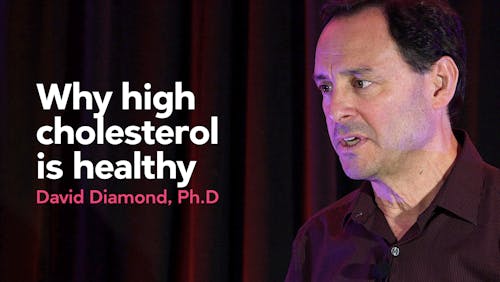Study shows red and white meat increase large (but not small) LDL particles

Dietary guidelines have long recommended limiting consumption of red meat, although without good outcome data to suggest this will improve our health. Now, interpretations of a new study say white meat is just as concerning. Notice I said “interpretations” of the study. This is not the conclusions from the authors themselves, but rather a manipulation of the study on social media and in the press.
The study, published in The American Journal of Clinical Nutrition, enrolled 113 individuals and randomized them to either a high saturated fat diet (40% carbs, 24% protein, 35% fat, 14% saturated fat) or a low saturated fat diet (equal macronutrients with the exception of 7% saturated fat replaced instead by monounsaturated fat). Each group changed their diet every four weeks from a high red meat diet (mostly from beef), high white meat diet (chicken and turkey) and high non-meat diet (legumes, nuts, grain and soy).
The main finding was that LDL and total cholesterol concentrations were higher with the higher saturated fat diets and with red meat and white meat alike. Also of note, the increase was all due to large LDL particles, with no change in the small particles, and no significant change in the total cholesterol to HDL ratio. These are important points as multiple studies suggest ratios and LDL size may have more predictive value than the amount of LDL cholesterol as a solitary variable.
The differences in LDL were statistically significant although quite small. For instance, the LDL for those in the red meat, high saturated fat diet was 100 mg/dL and for the non-meat high saturated fat diet was 93 mg/dL. This could be due to the fact that the study intervention was brief at only four weeks. But does that mean the difference would increase over time? Or would the difference decrease over time as clinical experience shows that lipid levels may change initially and then normalize over time? Based on this study we don’t know.
More importantly, however, the authors themselves acknowledge:
Large LDL particles, measured by several different methodologies, have not been associated with CVD in multiple population cohorts in contrast to the associations observed for concentrations of medium, small, and/or very small LDL… Thus, the estimated impact of red meat, white meat, and dairy-derived SFA on CVD risk as reflected by their effects on LDL cholesterol and ApoB concentrations may be attenuated by the lack of their effects on smaller LDL particles that are most strongly associated with CVD.
And, the impact of high intakes of red and white meat, as well as SFA from dairy sources, which selectively raised large LDL subfractions, may be overestimated by reliance on LDL cholesterol, as is the case in current dietary guidelines.
It’s hard to overstate the importance of these conclusions. It’s interesting to see a difference in a surrogate marker, like LDL, but the real question we care about is, “What does it mean for our overall health and longevity?” As the authors acknowledge, increasing large buoyant LDL may not be the harbinger of doom some make it out to be as the associations of LDL and cardiovascular risk appears to be greater with the smaller, more dense LDL particles. Also, they demonstrated no difference in the endothelial function of the blood vessels (a marker of vessel health).
So, what can we learn from this study?
- Saturated fat can increase large LDL particles without a significant change in TC:HDL ratio.
- Red and white meat have similar effects on LDL.
- There was no difference in the function of the blood vessels themselves.
These data tell us nothing about the “harm” of red and white meat because they tell us nothing about the implications on our overall health and longevity. Unfortunately some will take the headlines and conclude that white meat is equally as “dangerous” as red meat. As you can see, however, the study does not support that conclusion. That is why we continually strive to present the data for what it is, without over-reacting to catchy headlines.
You can read more in our detailed guide on saturated fat:


A user guide to saturated fat
Guide This guide explains what is known about saturated fat, discusses the scientific evidence about its role in health, and explores whether we should be concerned about how much we eat it.
Thanks for reading,
Bret Scher, MD, FACC
Earlier
Red meat and colon cancer: The evidence remains weak
Does LDL play an important role in peripheral nerve function?




















